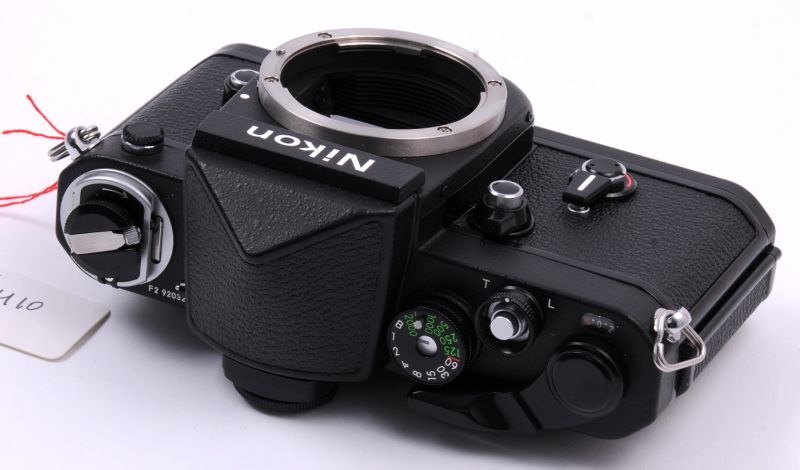Author: Brian Dilg, Chair, Photography Department, New York Film Academy
The last fifteen years have been giddy ones for photographic hardware and software manufacturers. The acceleration of affordable, high equality digital cameras has popularized photography and SLRs far beyond the interests of professionals. Our obsession with technology created rapid growth in sales (at least until the combination of the financial crisis and the overwhelming popularity of camera phones), as each new generation of cameras with even more megapixels has been an easy way to persuade people to throw away their “old” camera and buy a new one, regardless of whether they needed it. Although I still have my grandfather’s fully functional Nikon F2 from nearly 50 years ago, these days we are living in a largely disposal culture.
Does your average amateur need more megapixels to take snapshots of friends and family? Considering the fact that the popularity of actually making prints has declined so precipitously among hobbyists (replaced by the internet), in practice most people don’t need to capture more than three megapixels. That’s the highest resolution of JPEG images you’re likely to find online, even in these days of ultra-dense “retina” displays. The primary reason to use a camera with more resolution than that is to be able to make prints, which require far greater pixel density. In effect, most people are paying for resolution they simply do not need, although higher resolution is usually accompanied by better lenses, sensors, and other aids to better looking images.
So can this technological change continue ad infinitum? Manufacturers have indicated that they have reached the limits of how many pixels can be squeezed onto a 35mm “full frame” digital sensor; studies show diminishing returns when more than 25-35 megapixels are crammed onto a 24x36mm sensor. Undoubtedly, Canon is mulling over how to provide a higher resolution camera than their current 22 megapixel flagship to challenge Nikon’s popular 36 megapixel D800, and pros as well as those who are simply enamored by technology will have fun choosing between them.
While there are far better ways to serve the vast majority of non-professionals using cameras than adding megapixels (a topic I’ll address in a moment), for professionals there are certainly plenty of reasons to improve basic imaging technology. First of all, a physically larger sensor provides significant advantages. Obviously, more megapixels can fit onto a larger CCD or CMOS sensor, but even more importantly, technical issues raised by confronting the density limits of a sensor are eased.
Light (photons) are gathered into buckets called photosites, and the larger those can be, the more photons can be gathered. This becomes especially critical in capturing shadow detail, which is challenged by several factors: 1) the number of photons is at its lowest in the darkest shadows, 2) spurious (ambient) electronic noise (showing up as random bright, saturated pixels) is most obvious the closer we get to black, 3) the human eye is far less responsive and less able to perceive subtle tonality in shadows than in highlights, and 4) when it comes to printing, shadow detail is one of the greatest challenges.
All of that simply means that larger sensors allows for bigger photosites and subsequently better images, especially in the shadows. Bigger photosites also mean being less troubled by the negative effects of a phenomenon called diffraction, which refers to how an image gets softened when light passes through a hole (i.e., an aperture).
Larger sensors also mean less depth of field, which is not appropriate for most photojournalism and street photography, but is one of the uniquely beautiful characteristics that still makes medium and large format film cameras preferable when you want to isolate a subject from the background. Sharpness and resolution can also be a tremendous asset for images with important detail, like landscapes, although it can be too much information in a portrait if you are noticing someone’s pores more than their face as a whole.
Since the proliferation of digital cameras, medium and large format digital sensors have been astronomically expensive. A state of the art 50 megapixel CMOS medium format camera from the industry leaders, Phase One and Hasselblad, will set you back about $30,000-40,000 for the camera body, digital back, and just one lens. That is overdue for change, as witnessed by Pentax’s recent announcement of their 50 megapixel CMOS medium format system that also shoots HD video, the 645Z, for only $8,500. This puts enormous pressure on Phase One and Hasselblad in a way that is good for the consumer, and very likely heralds a return to an updated version of the kind of medium format systems that were used overwhelmingly by professionals prior to the invention of digital cameras.
So what about the more casual photographer, the hobbyists or people who simply want to take snapshots of their lives? What kind of technical innovations are really needed for them? Camera manufacturers face a bit of quandary: your average non-technical camera user would simply like to get their hands on a camera that will make it easy to take great pictures. However, no matter how sophisticated the technology gets – autofocus, face detection, canned situational shooting modes, showy filters, etc. – you cannot put creativity in a can with a “make great picture” button on it. No technology will ever have an iota of understanding of what makes an image great. Just to take one example, exposure, the challenging lighting conditions that lead to frustration (under or over exposure, etc.) in the hands of someone is counting 100% on the camera to do the thinking are exactly the same conditions that can produce fantastic, dramatic images in the hands of someone who has taken control away from the camera’s technology and made a creative interpretation.
In the last analysis, it is precisely the illusion that better technology will lead to better pictures that keeps people buying new cameras – instead of accepting that there are no shortcuts. It simply takes study and practice!
Happy shooting.
